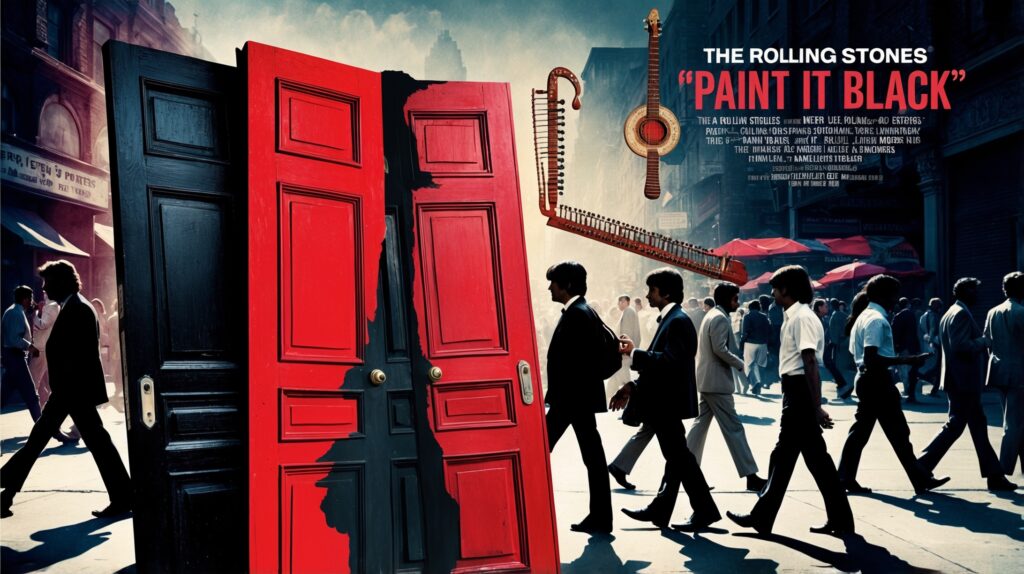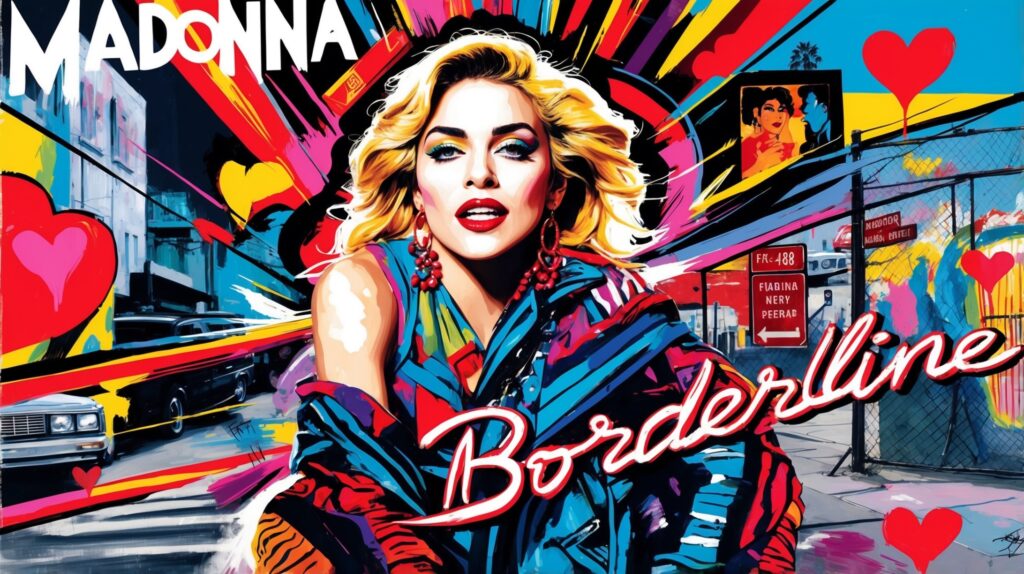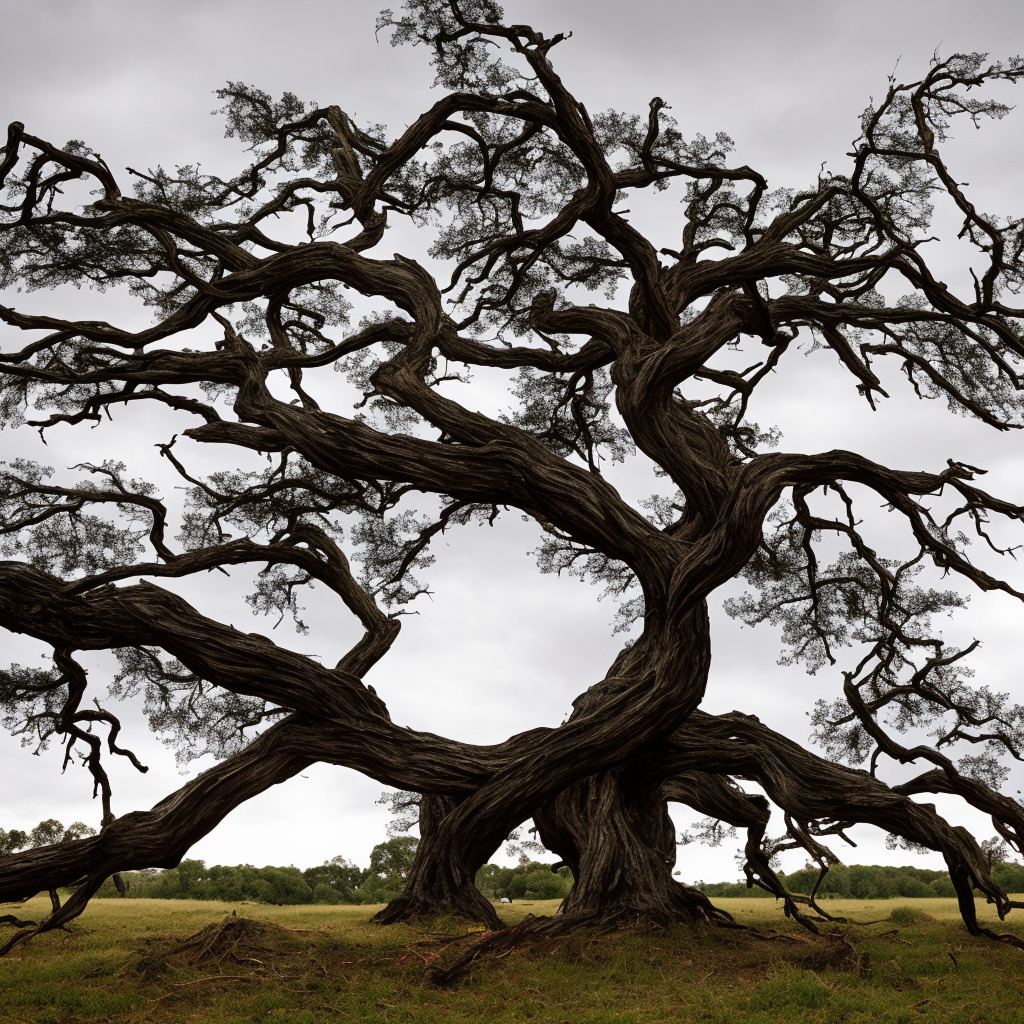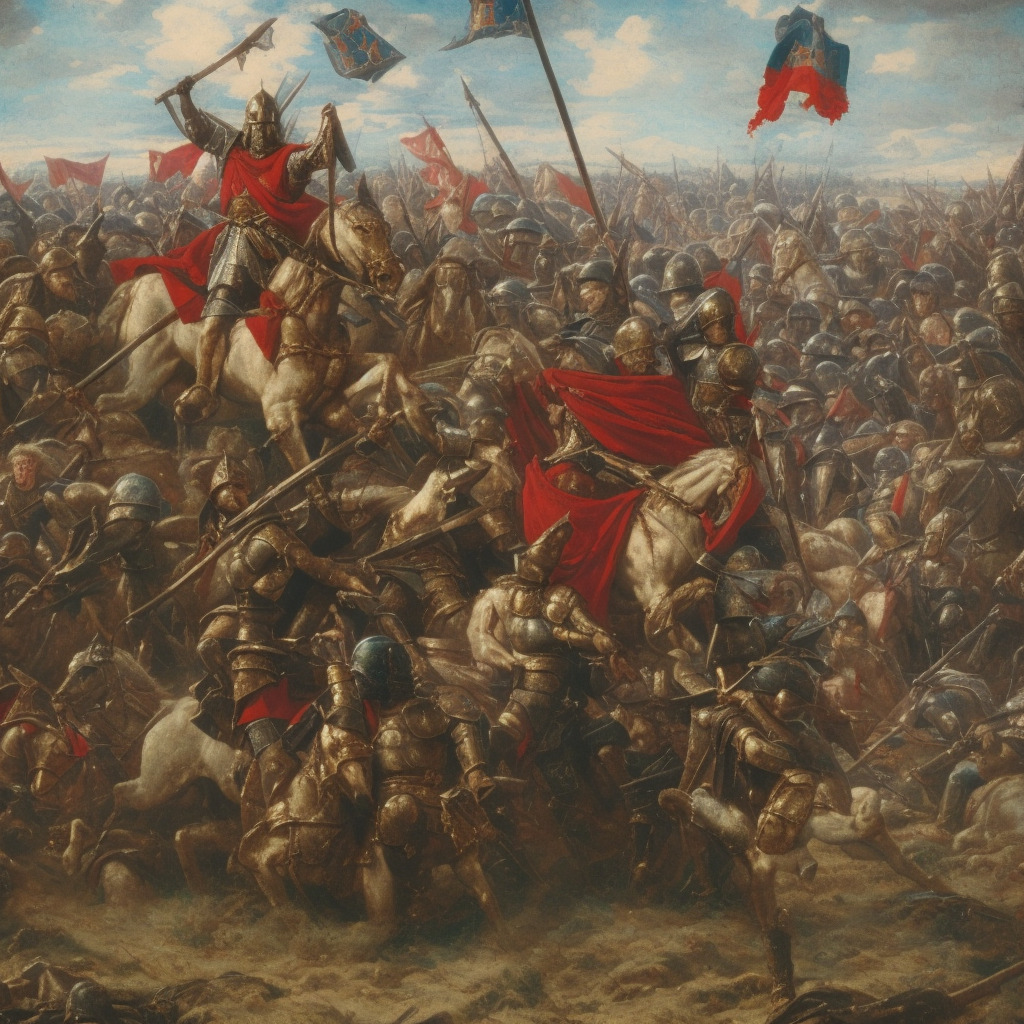The Rolling Stones: Pioneers of Rock and Cultural Icons
The Rolling Stones, celebrated as pioneers of rock, were masterminds behind the cultural anthem “Paint It Black.” Formed in London in 1962, their innovative spirit and fusion of blues with rock redefined the sound of a generation. With members Mick Jagger, Keith Richards, and others, the band pushed musical boundaries, maintaining an influence that is felt across music decades later.
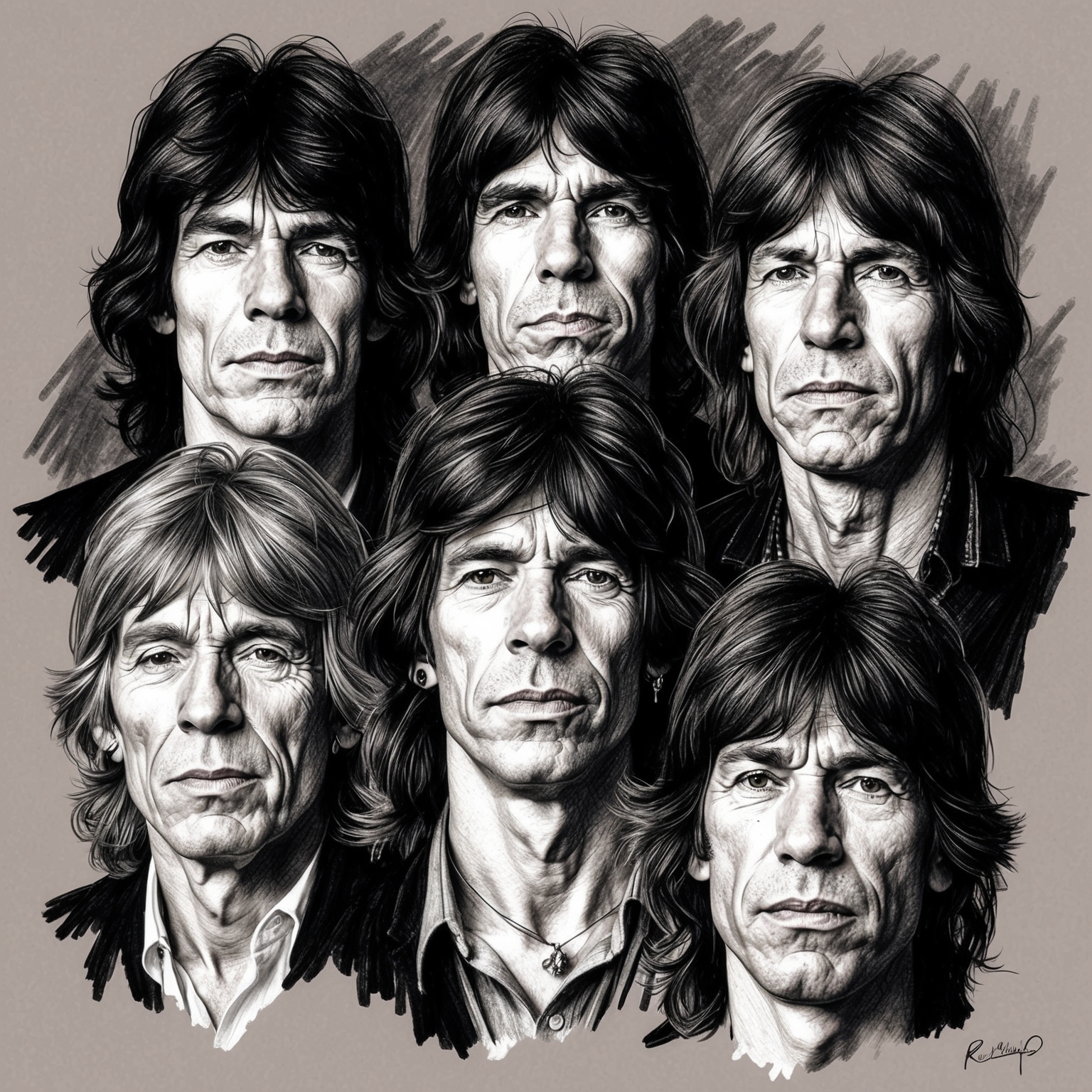
The Rolling Stones have carved their name into the rock and roll hall of fame with a legacy as enduring as their iconic riffs and unforgettable stage presence. Known for pushing musical boundaries and redefining the sound of a generation, the band’s significance in the world of music is highlighted by hits like “Paint It Black,” which captured the turbulent spirit of the 1960s.
The band was formed in London in 1962 by the original members Mick Jagger, Keith Richards, Brian Jones, Charlie Watts, and Bill Wyman. From humble beginnings, they quickly rose to prominence with a raw, edgy sound that contrasted sharply with the polished pop music of the era. Their early career was characterized by a fusion of blues influences and rock’s energetic dynamism, setting them apart from their contemporaries.
During the era surrounding the release of “Paint It Black” in 1966, The Rolling Stones were at the apex of their creativity. This single became one of their signature songs, representing a departure from their usual sound with its compelling use of the sitar, a reflection of their innovative spirit and willingness to experiment with diverse musical instruments and styles. The song also exemplified the band’s ability to capture cultural nuances and emotions, making it a timeless piece that resonates with fans even today.
Their collaborations have been marked by a symbiotic partnership, especially between Mick Jagger and Keith Richards, whose songwriting ingenuity fueled the band’s success. The synergy within the band, along with a readiness to embrace and incorporate different musical influences, ensured their longevity and relevance in a rapidly evolving music scene.
The Minds Behind the Melody: Mick Jagger and Keith Richards
Explore the compositional brilliance of Mick Jagger and Keith Richards as they crafted “Paint It Black,” blending rock with Middle Eastern influences to create a timeless classic.

Background and Career: The Rolling Stones’ iconic track “Paint It Black” owes much of its musical genius to the songwriting duo of Mick Jagger and Keith Richards. Both were key figures in the band and have played crucial roles in shaping rock music history. Mick Jagger, known for his charismatic stage presence and distinctive voice, paired with Keith Richards, whose guitar prowess and riff-making abilities are legendary, formed the backbone of The Rolling Stones. The two met in the early 1960s and quickly began collaborating, combining Jagger’s lyrical acuity with Richards’ musical innovation to create songs that resonated across generations. Their ability to blend diverse musical influences has left a lasting impact on rock and roll.
Musical Style and Influences: Jagger and Richards are renowned for their genre-blending approach. The song “Paint It Black” primarily encapsulates elements of rock, but it also intriguingly incorporates sounds of Middle Eastern music, a testament to the duo’s versatility and eagerness to experiment. Known for their blues influences, Richards and Jagger often looked beyond the traditional boundaries, drawing from diverse cultural streams to create music that was fresh and resonant. This exploration was pivotal in shaping the adventurous sound that The Rolling Stones are celebrated for today.
Role in the Song’s Creation: The duo’s role in the creation of “Paint It Black” was instrumental. Keith Richards introduced the haunting guitar riffs that set the song apart, while Mick Jagger’s lyrics brought a depth of emotion and introspection. This song marked a departure from their previous work, reflecting darker themes and a more sophisticated composition, which resonated deeply with audiences. Their collaborative synergy allowed them to craft a timeless piece that is both innovative and evocative, cementing the song’s place in music history.
A Timeless Classic: Accolades and Covers of ‘Paint It Black’
Paint It Black’ by The Rolling Stones has gained recognition through various covers, TV shows, movies, and video games, solidifying its place as a rock classic.
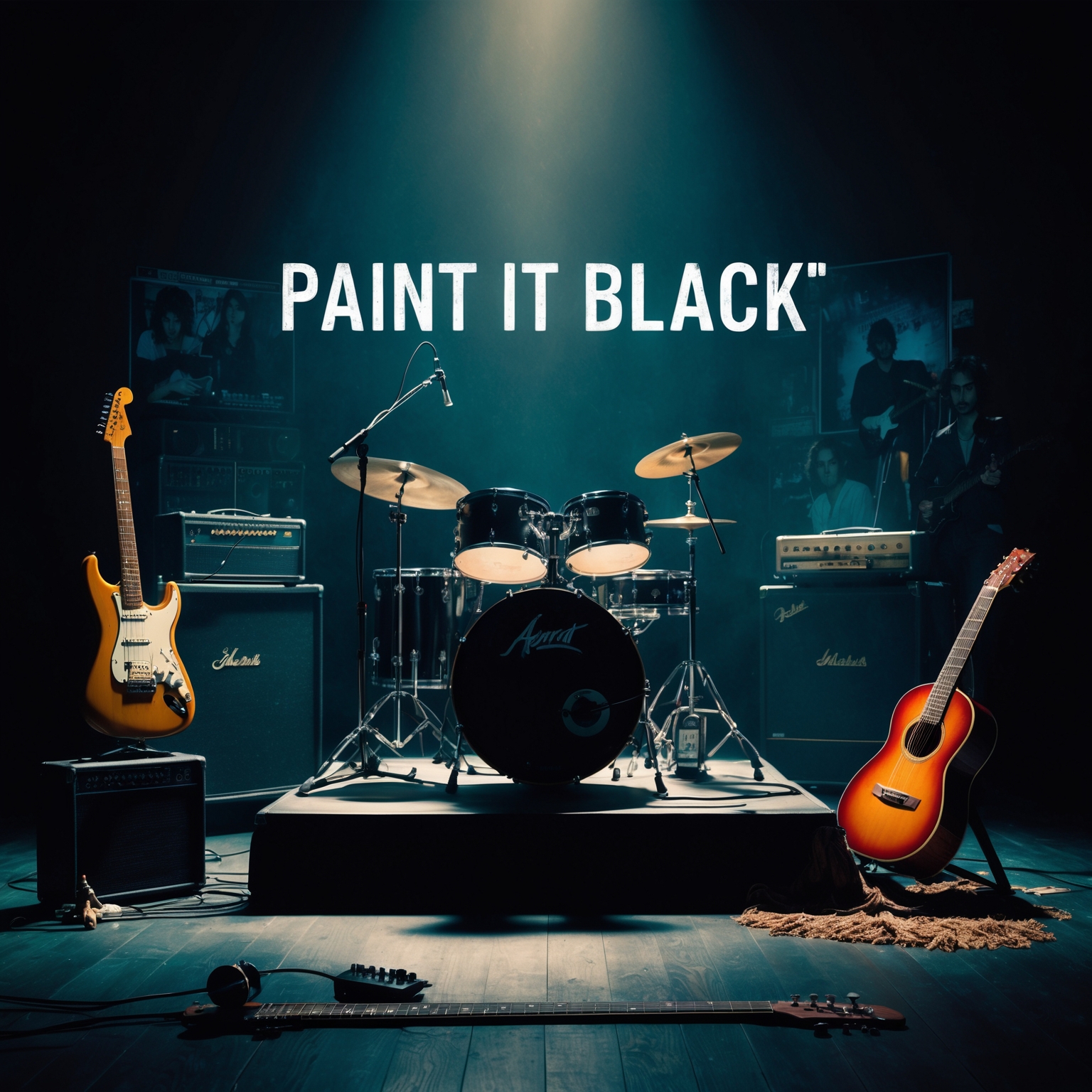
‘Paint It Black’ remains a pivotal track in the history of rock music, having garnered not just adulation upon its release, but a slew of accolades and recognition over the decades. Though the song itself did not receive specific awards upon its original release, its enduring influence is evident in its chart-topping success and enduring presence in pop culture.
Covers of ‘Paint It Black’ further solidify its status as a rock classic, with numerous artists across various genres offering their takes on this haunting tune. Notably, artists such as Eric Burdon & War transformed it into a jazz-rock fusion, while Ciara added her distinct modern R&B spin. The band U2 also famously covered the song during their 1992-1993 Zoo TV Tour, reimagining it with their signature style. Each cover testifies to the song’s versatility and universal appeal, allowing different generations and musical styles to reinterpret its dark essence.
Apart from music covers, ‘Paint It Black’ has been influential in various media. It has resonated with audiences as it featured in films like ‘Full Metal Jacket’ and ‘The Devil’s Advocate’, and in TV shows such as ‘Westworld’. Furthermore, the song made its way into video games, providing a backdrop to high-intensity scenes in games like ‘Twisted Metal: Black’ and ‘Guitar Hero III: Legends of Rock’. Its undeniable impact extends beyond the realm of music, embedding itself in the fabric of pop culture.
Climbing the Charts: A Deep Dive into the Success of ‘Paint It Black’
Paint It Black’ became a chart-topping triumph for the Rolling Stones, achieving top spots internationally and marking a pivotal stylistic shift for the band.
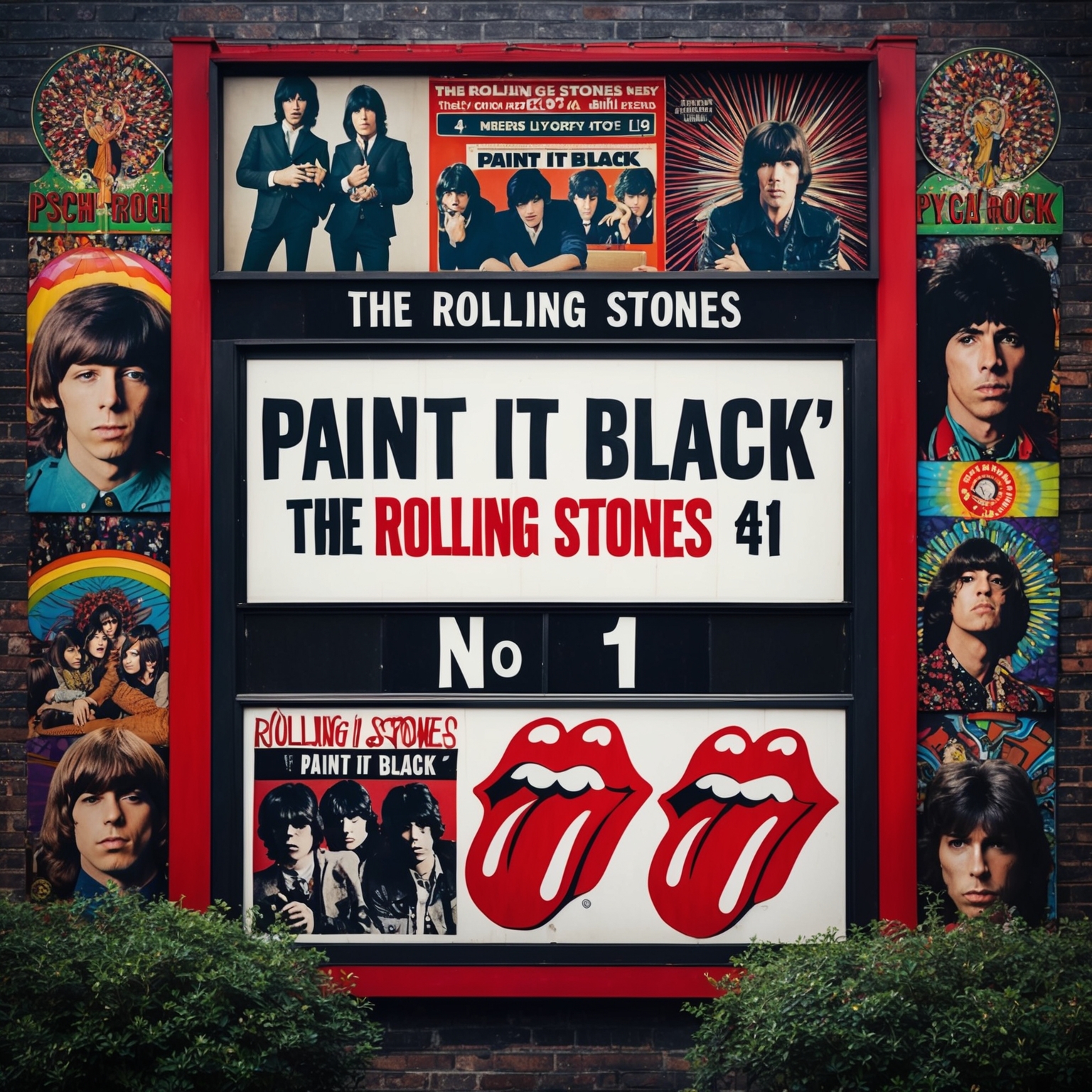
Upon its release on May 7, 1966, the Rolling Stones’ ‘Paint It Black’ quickly began its ascent on the charts, establishing itself not only as a commercial success but as a cultural phenomenon. The song rocketed to the number one spot on the Billboard Hot 100 in just its second week, marking a significant high point in the band’s already impressive career. Overseas, it mirrored this triumph, claiming the top position in the UK Singles Chart and various other international charts. This rapid rise was indicative not just of the song’s quality, but of the Rolling Stones’ growing domination of the music scene during the 1960s.
Comparing ‘Paint It Black’ to other chart-toppers of the time, one can see its unique position. While acts like The Beatles and The Beach Boys were also at the zenith of their popularity, ‘Paint It Black’ distinguished itself with its dark, sitar-infused sound—a departure from the more typical pop-rock styles prevalent at the time. This sonic innovation, coupled with its haunting lyrics, contributed to its enduring impact and ensured that it stood out in a sea of hits.
The song was not just a commercial success; it reflected an artistic turning point for the Stones. Previously known for more blues-oriented tracks, ‘Paint It Black’ signaled a shift towards more adventurous territory—both musically and thematically—showing a band unafraid to push the boundaries of rock music. The marketing strategies for the song relied heavily on its uniqueness, with bold promotional efforts that showcased its intriguing sound and message. These strategies paid off handsomely, with global fans and critics alike lauding it for its depth, paving the way for later innovative tracks by the band.
Exploring the Enigma: “Paint It Black” and Its Visual Interpretations
Though “Paint It Black” lacks an official music video, its haunting themes have inspired numerous fan-made videos and iconic live performances, contributing to its lasting legacy.

The Rolling Stones’ “Paint It Black” lacks an official music video created during the era of its release in 1966, as was common for many songs of that time. However, its powerful themes and haunting melody have inspired numerous fan-made videos and live performance interpretations that poignantly capture its essence. These visual accompaniments vary widely in style but often highlight the song’s dark and introspective nature, underscoring its themes of grief, existential despair, and the longing for change.
In the absence of an original music video, live performances of “Paint It Black,” particularly those from The Rolling Stones’ numerous tours, offer a glimpse into the band’s dynamic stage presence and the raw energy of their music. These performances often feature intense lighting and stage effects that accentuate the song’s mood, providing a captivating visual partner to the music. With Mick Jagger’s hypnotic stage presence and the band’s instrumental prowess, these live renditions have played a significant role in the song’s enduring popularity.
Fans have also contributed significantly to the song’s visual legacy. Enthusiasts have created numerous videos that interpret the track through various artistic lenses, ranging from animated sequences to montage-style clips featuring dramatic and emotionally charged imagery. These fan-made tributes take creative liberties while still paying homage to the song’s impact. Despite the absence of an official music video, “Paint It Black” endures through these interpretations, forever imprinted in popular culture.
Exploring the Musical Architecture of ‘Paint It Black’
Explore the intricate musical structure of ‘Paint It Black,’ from its key of E minor and brisk tempo to its exotic sitar melodies. Discover how this track signifies a pivotal moment in The Rolling Stones’ evolving sound.

Paint It Black by The Rolling Stones is an intriguing blend of musical elements that renders it not just a song, but an experience. At the core of its structure lies the key of E minor, a choice that is pivotal in establishing the song’s somber and contemplative atmosphere. The usage of a minor key is complemented by the song’s driving rhythm and distinctive chord progression, which help reinforce its haunting quality and intensity.
The song follows a unique chord structure, largely oscillating between E minor or G major, instilling an unsettling tension that aligns with the lyrical themes of despair and longing. The tempo is brisk, around 156 beats per minute, injecting a sense of urgency that propels the song forward, capturing the listener’s attention from the very first note.
One of the defining features of Paint It Black is its melody and harmony, characterized by both Eastern and Western musical influences. The iconic sitar melody, played by Brian Jones, adds an exotic layer of sound, distinguishing the song from its contemporaries. This incorporation of the sitar was groundbreaking at the time, aided by Charlie Watts’ consistent drumbeat, which provides a throbbing heartbeat for the piece. Furthermore, Bill Wyman’s bassline and Mick Jagger’s emotive vocals bind these elements with depth and raw emotion.
When placed in the context of The Rolling Stones’ discography, Paint It Black stands as a testament to the band’s adaptability and willingness to explore new musical territories. Released in 1966, it marked a shift from the blues-influenced roots of their earlier works to a more experimental sound evident on the album Aftermath. This experimentation showcased their evolving artistic direction and set the stage for future innovations, emphasizing their role as pioneers of the rock genre.
Recorded at RCA Studios in Hollywood and produced by the legendary Andrew Loog Oldham, the song emerged during a period of vibrant creativity for the band. Rumors suggest the atmosphere during the recording sessions was one of excitement and intense energy, driven by the band’s eagerness to push boundaries. Such anecdotes contribute to the mythos of Paint It Black, illuminating the spirit of innovation that permeates its every note.
Decoding the Dark Depths of “Paint It Black”
Analyze the profound themes and literary devices used in the lyrics of “Paint It Black” to understand its emotional impact and cultural resonance.
No colors anymore, I want them to turn black
I see the girls walk by dressed in their summer clothes
I have to turn my head until my darkness goes
I see a line of cars and they’re all painted black
With flowers and my love, both never to come back
I see people turn their heads and quickly look away
Like a newborn baby, it just happens ev’ry day
I look inside myself and see my heart is black
I see my red door, I must have it painted black
Maybe then I’ll fade away and not have to face the facts
It’s not easy facing up when your whole world is black
No more will my green sea go turn a deeper blue
I could not foresee this thing happening to you
If I look hard enough into the setting sun
My love will laugh with me before the morning comes
I see a red door and I want it painted black
No colors anymore, I want them to turn black
I see the girls walk by dressed in their summer clothes
I have to turn my head until my darkness goes
 Exploring the lyrical landscape of “Paint It Black” by The Rolling Stones is a journey into themes of darkness, loss, and existential longing. At its core, the lyrics draw the listener into a narrative that is deeply personal and evocative of the epoch’s cultural undertones. The overarching theme is one of despair and a desire to cover vivid realities with darkness, symbolized by the repeated yearning to paint a red door black. This metaphor of transformation reflects a wish to escape the vividness of life, representing perhaps the mourning of a personal loss or a more generalized feeling of depression.
Exploring the lyrical landscape of “Paint It Black” by The Rolling Stones is a journey into themes of darkness, loss, and existential longing. At its core, the lyrics draw the listener into a narrative that is deeply personal and evocative of the epoch’s cultural undertones. The overarching theme is one of despair and a desire to cover vivid realities with darkness, symbolized by the repeated yearning to paint a red door black. This metaphor of transformation reflects a wish to escape the vividness of life, representing perhaps the mourning of a personal loss or a more generalized feeling of depression.
One striking element is the song’s narrative style, which uses the first-person perspective to create an intimate connection with the listener. There’s a story being told through visuals of everyday scenes—girls in summer clothes, cars painted black—that become charged with personal gloom. The imagery of turning one’s head to conceal their darkness mirrors a broader societal tendency to shy away from confronting inner turmoil and collective grief.
The use of literary devices such as metaphor—notably the ‘black heart’—alludes to intense emotional states. There’s also alliteration with phrases like “darkness goes” and a notable rhyme scheme that gives the song a melodic yet haunting quality. These devices intensify the emotional weight and have etched the song in the minds of its listeners as an epitome of melancholy and introspection.
Comparing “Paint It Black” to other works by The Rolling Stones, such as “Gimme Shelter” or “Sympathy for the Devil,” we see a similar exploration of societal and personal issues, though “Paint It Black” is particularly stark in its portrayal of nihilism. It captures a universal human experience—a feeling of being overwhelmed by life’s uncontrollable events.
From a cultural perspective, many interpret the lyrics as reflecting the turbulent social climate of the 1960s, including the Vietnam War and the emerging countercultural movement. Such references render the song timeless, connecting with audiences across generations because of its universality. The emotional impact lies in its ability to resonate with listeners who have experienced loss or longing, encapsulating feelings that are both deeply personal and universally understood. This relatability may well contribute to its enduring success and popularity.
Beyond mere linguistic richness, the song is renowned for provoking personal reflection, inviting fans to derive their interpretations of the lyrics. This multivalent quality ensures that “Paint It Black” remains a subject of lively debate and perpetual analysis among its admirers.
? Did you know Paint It Black by the Rolling Stones features a sitar? Brian Jones added that exotic twist! ?? #RockTrivia #RollingStones #MusicFacts tinyurl.com/2khckkca
Click to Tweet

